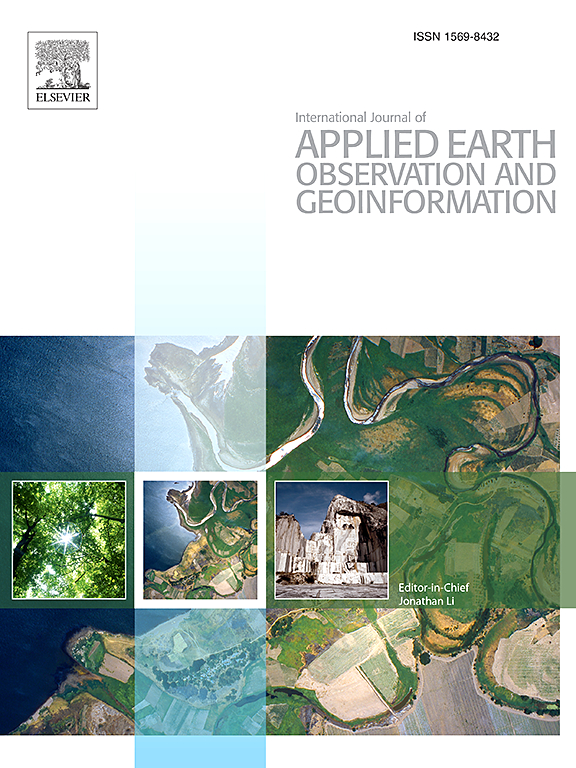Mapping of insect pest infestation for precision agriculture: A UAV-based multispectral imaging and deep learning techniques
IF 7.6
Q1 REMOTE SENSING
International journal of applied earth observation and geoinformation : ITC journal
Pub Date : 2025-02-17
DOI:10.1016/j.jag.2025.104413
引用次数: 0
Abstract
In recent years, the precise identification of an insect pest infestation has become increasingly critical for effective management in agricultural fields. This research addresses the imperative need for an advanced and integrated approach to mapping insect pest infestation in agricultural crops, utilising unmanned aerial vehicles (UAVs), multispectral (MS) imagery, and deep learning (DL). The existing literature reveals a limited number of studies that harness the potential of UAV-based MS imagery in conjunction with DL models for mapping and managing insect pest infestations. The primary aim is to enhance the precision and efficiency of insect pest infestation mapping through the synergistic analysis of spectral bands, vegetation indices (VIs), and textural features using DL techniques. The aerial imagery and ground truth information were collected in crop field for mapping of insect pest infestation. The investigation comprised three specific analyses; first is about establishing correlations between insect pest pupal count versus spectral bands and VIs. Second, the performance comparison of three DL models including U-Net, DeepLabV3+, Fully Convolutional Network (FCN) to segment three classes including insect pest infestation patches, other vegetation (weeds), and crops. Finally, the third analysis evaluated the efficacy of textural features against spectral features in mapping an insect pest infestation using DL techniques. The results indicate that, concerning the correlation between pupal count in the field and spectral bands or VIs, the Simple Ratio Index (SRI), and Red Edge Chlorophyll Index (RECI) demonstrated a positive correlation of 0.7, whereas the Green Chlorophyll Index (GCI) displayed a positive correlation of 0.6. Another key finding shows that spectral features outperformed textural features across all DL models for insect pest infestation segmentation. The research highlights the effectiveness of spectral features, particularly with the FCN model, which demonstrated best performance metrics for insect pest segmentation in the study field. The FCN model achieved scores with a precision (P) of 93%, recall (R) of 97%, F1-score (F1) of 95%, and Intersection over Union (IoU) of 90%, underscoring its excellence in accurately identifying and delineating pest infestations in the field. The proposed methodology and its findings offer implications such as enhanced pest surveillance, timely intervention, precision pest management, and optimised resource allocation that can be extended to optimise insect pest infestation mapping in various crop lands, enabling precise control strategies aimed at enhancing crop yield.
求助全文
约1分钟内获得全文
求助全文
来源期刊

International journal of applied earth observation and geoinformation : ITC journal
Global and Planetary Change, Management, Monitoring, Policy and Law, Earth-Surface Processes, Computers in Earth Sciences
CiteScore
12.00
自引率
0.00%
发文量
0
审稿时长
77 days
期刊介绍:
The International Journal of Applied Earth Observation and Geoinformation publishes original papers that utilize earth observation data for natural resource and environmental inventory and management. These data primarily originate from remote sensing platforms, including satellites and aircraft, supplemented by surface and subsurface measurements. Addressing natural resources such as forests, agricultural land, soils, and water, as well as environmental concerns like biodiversity, land degradation, and hazards, the journal explores conceptual and data-driven approaches. It covers geoinformation themes like capturing, databasing, visualization, interpretation, data quality, and spatial uncertainty.
 求助内容:
求助内容: 应助结果提醒方式:
应助结果提醒方式:


